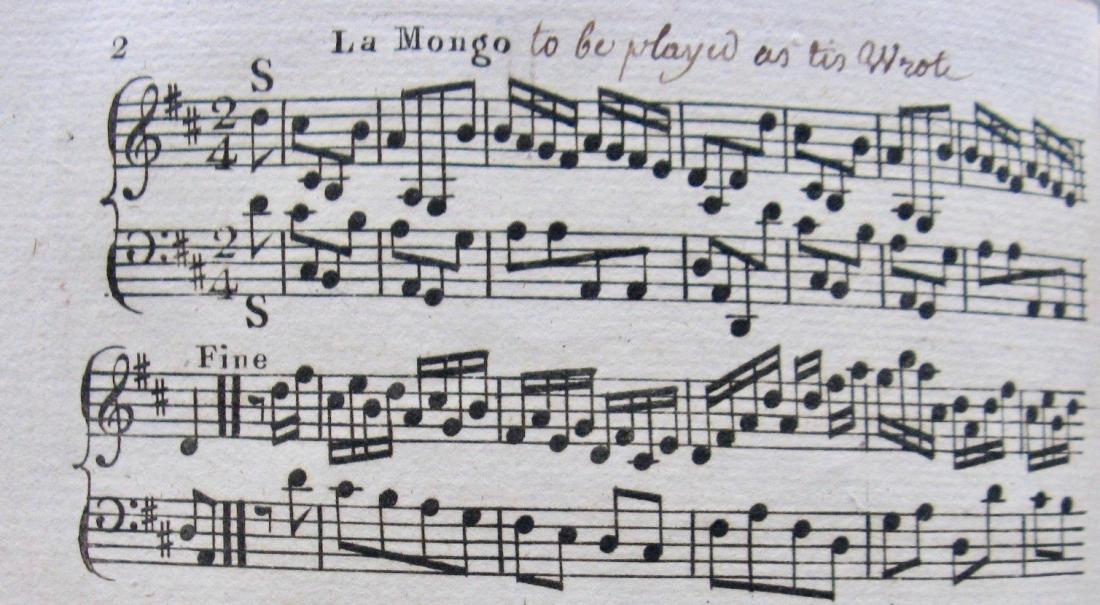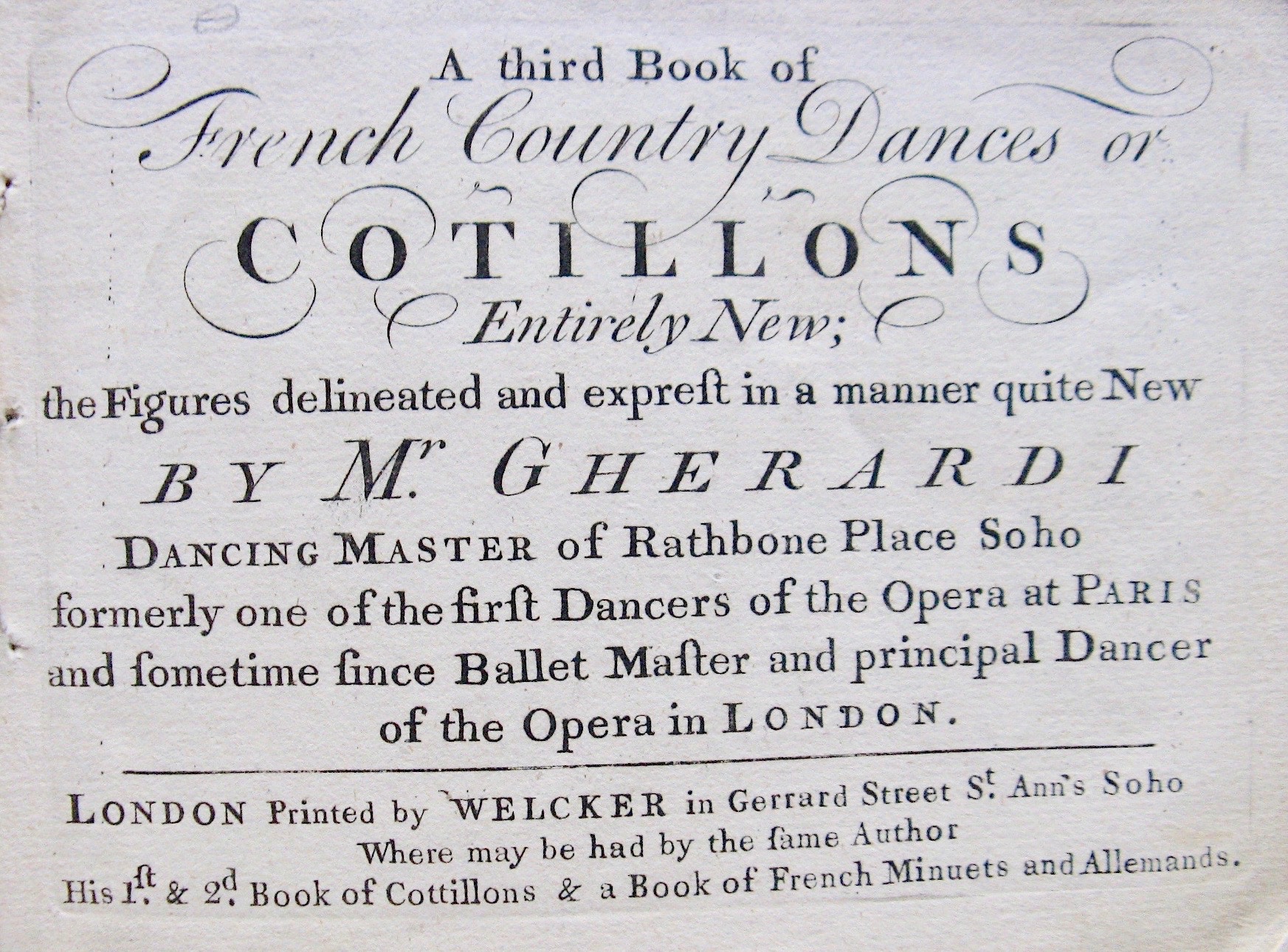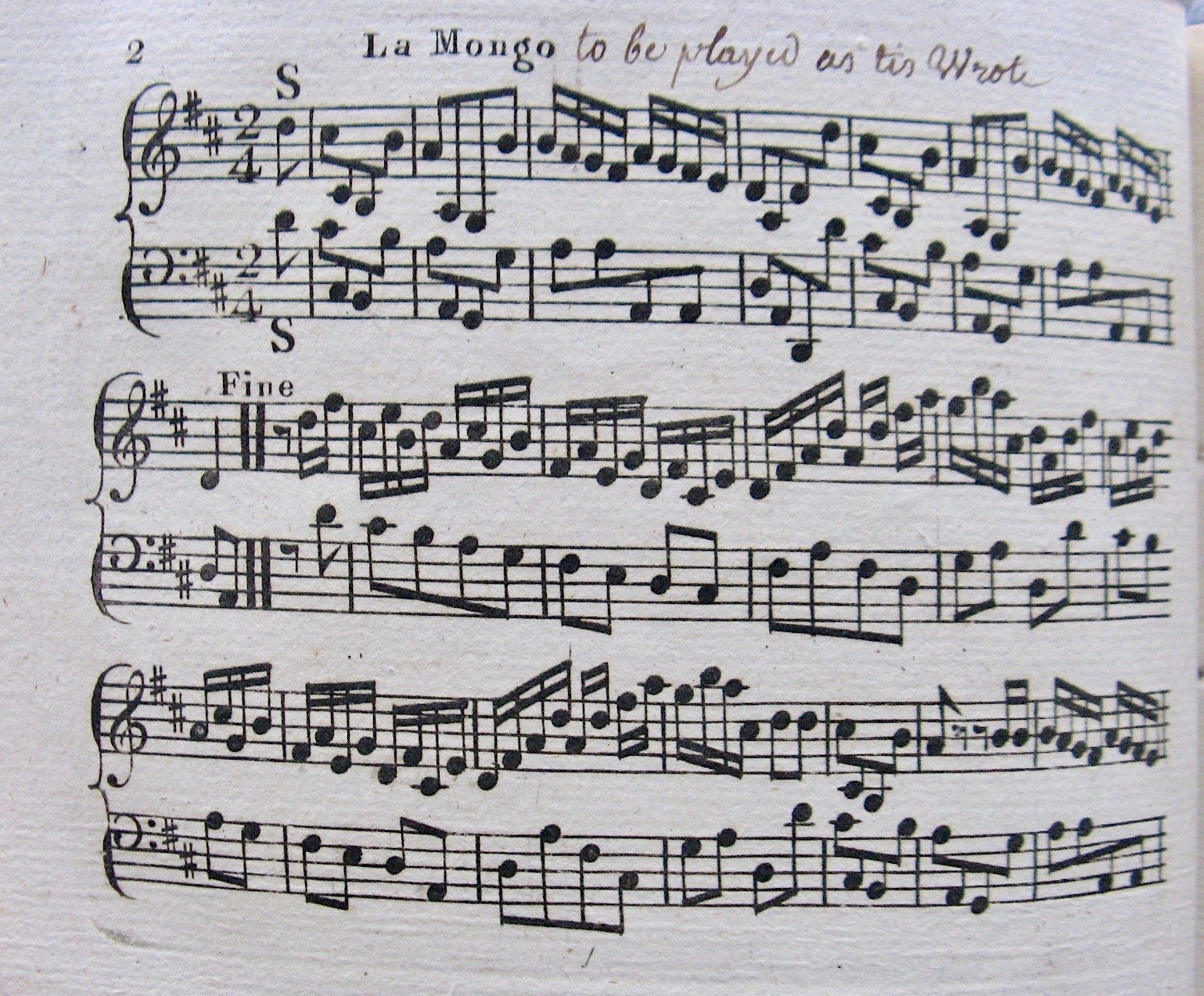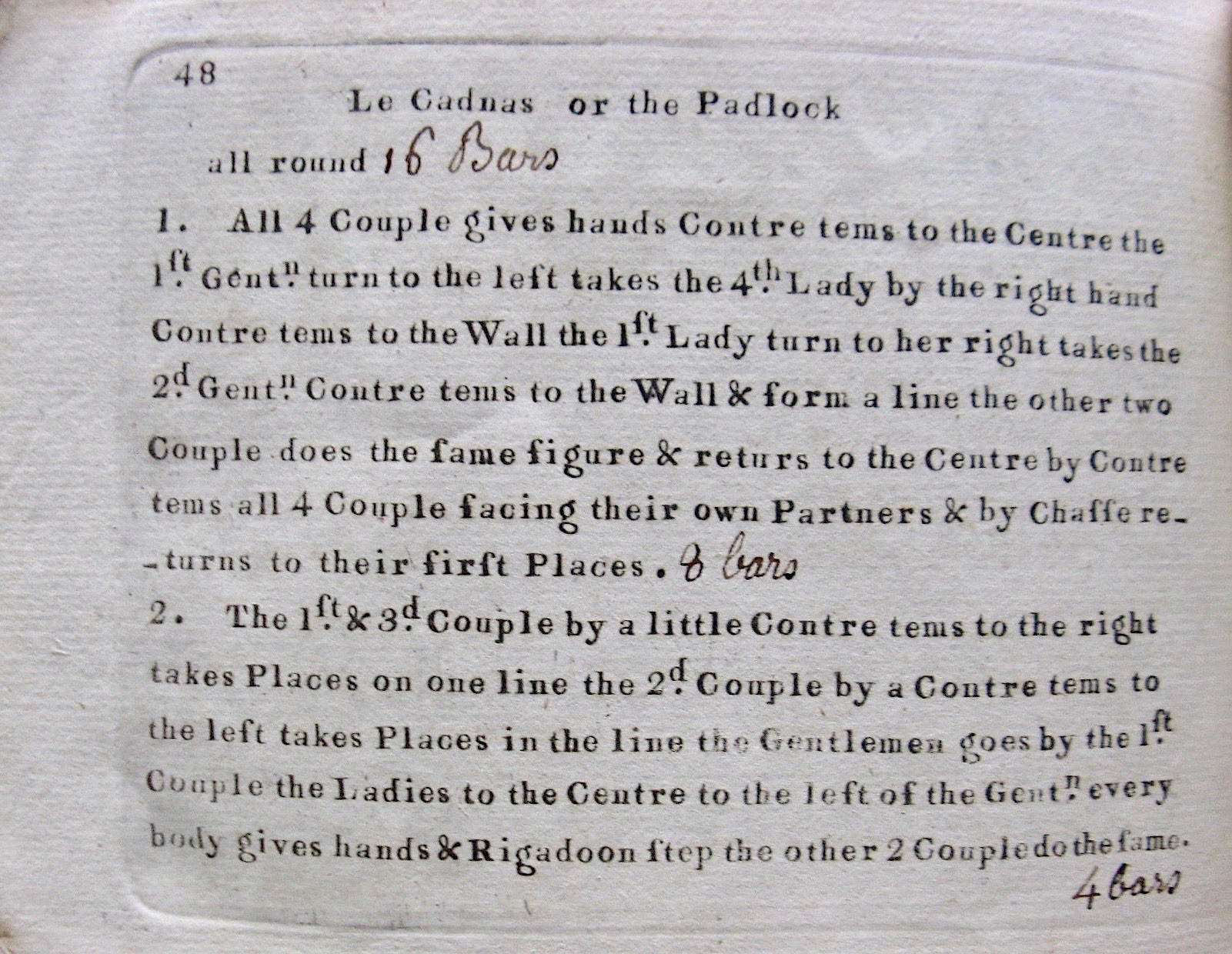
A Third Book of French Country Dances or Cotillons by Mr Gherardi (1770) - La Mongo and Le Cadnas or the Padlock
A Third Book of French Country Dances or Cotillons Entirely New; the Figures Delineated and Exprest in a Manner Quite New by Mr Gherardi, Dancing Master of Rathbone Place Soho. Formerly one of the First Dancers of the Opera at Paris and sometime since Ballet Master and Principal Dancer of the Opera in London (London: Welcker, 1770)
-
La Mongo
-
Le Cadnas or the Padlock
Belton House A13.17.29, NT 3054512
To download mp3 files either click on the three dots or right-click on the player and choose the save/download option.
Recording Details:
La Mongo
Taisia Sandetcaia and Wiebke Thormählen - violins
Joseph Crouch - cello
Recorded at the Royal College of Music, London, 20 May 2021
Le Cadnas or the Padlock
Wiebke Thormählen - violin
Sarah McMahon - cello
Jean Kelly - harp
Recorded at the Royal College of Music, London, 24 September 2021
SCORE: Gherardi Cotillons - La Mongo & Le Cadnas
The Padlock was an afterpiece comic opera by Charles Dibdin and Isaac Bickerstaff, which premiered at Drury Lane in October 1768. It was phenomenally successful, achieving more than a hundred performances across the first three years of production. Dibdin starred in the blackface role of the West Indian servant, Mungo, through which the opera addressed the issue of black slavery (Nussbaum 2018). In his opening song, ‘Dear heart what a terrible life am I led’, Mungo sings of the wretchedness of his life as a servant, claiming “a dog has a better… I wish to my heart I was Dead”. Dibdin’s performance captured the public imagination and saw him memorialised as Mungo in artworks, decorative objects and masquerade characters (Lawrence 1917; Oldfield 1993).
Giovanni Gherardi’s inclusion of two cotillions based on The Padlock in his Third Book of French Country Dances was a deliberate homage to a private performance of the opera by the Bridgeman family in London in 1770. La Mongo and Le Cadnas bookend the collection and enact a very direct transposition of The Padlock: La Mongo is an almost identical rendering of the first forty bars of Mungo’s ‘Dear heart’, while Le Cadnas is based on the vaudeville finale, which ends with the unmistakeable phrase “let all her Ways be unconfind and clap your Padlock on her Mind”. The popularity of the opera ensured it would have been virtually impossible to dance these cotillions without also knowing the words and understanding how they juxtaposed narratives of enslavement with elite entertainment.
A copy of Gherardi’s publication at Belton House shows that it was used as a pedagogical resource for both dance and music. Gherardi’s preface contains printed diagrammatic representations for a variety of cotillion figures while detailed instructions follow the music for each dance. On the Belton House copy, handwritten annotations indicate how many bars of music are needed for each part of the figure, while the music often contains commentary about whether it is to be played through as written or whether repeats are observed.
The arrangement of Gherardi’s La Mongo for two violins and a cello represents an inexpensive ensemble that could be easily gathered, either from the professional ranks or from within a family household; in the late 1760s, James Woodforde described such a practice in rural Somerset where dances were accompanied by a band of one or two violins and a “Bass Viol” (Winstanley 1986, 2008). A visual example of this ensemble appears on George Pyke's musical clock at Temple Newsam. For Le Cadnas we experimented with an ensemble of harp, cello and violin. The violin is central to much of the iconography and descriptions of dancing and dance pedagogy in domestic spaces that appeared in the 1760s and 1770s. Gherardi himself advised that when accompanying dance "the first violin ought to know the air by heart", while James Woodforde referred to a "Base Viol & Violin" for social dancing in 1769 and the following year danced to the music of Mr Rice the harper (Gherardi 1768; Winstanley 1986). Evidence of the harp joining small, mixed ensembles to accompany dance appears frequently from the 1790s, such as in Isaac Cruikshank's "Rehearsing a Cotilion" from 1792, while the violin, cello and harp appear prominently as an ensemble in one of the plates for La Belle Assemblée published in 1817. As The Padlock remained hugely popular well into the nineteenth century, our arrangement of Le Cadnas here imagines a possible early nineteenth-century reception of the final vaudeville tune as a dance. Of course, as was the case across this time period, it was also influenced by which instrumentalists were available.
Further Reading:
Gherardi, Giovanni. 1768. "Instructions for the more Ready and Perfect Attainment of the Cotillons or French Country Dances. By Mons. Gherardi, of Rathbone Place, Soho." The London Magazine or Gentleman's Monthly Intelligencer 37: 380.
Lawrence, W.J. 1917. “An Old English Music Handkerchief.” The Musical Quarterly 3, no. 4 (October): 503-508.
Nussbaum, Felicity. 2018. “‘Mungo Here, Mungo There’: Charles Dibdin and Racial Performance.” In Charles Dibdin and Late Georgian Culture, edited by Oskar Cox Jensen, David Kennerley and Ian Newman, 23-42. Oxford: Oxford University Press.
Oldfield, J.R. 1993. “The ‘Ties of Soft Humanity’: Slavery and Race in British Drama, 1760-1800.” Huntington Library Quarterly 5, no. 1 (Winter): 1-14.
Winstanley, R.L., ed. 1986. The Ansford Diary of James Woodforde, vol. 4. [S.I.]: The Parson Woodforde Society.
Winstanley, R.L., ed. 2008. The Ansford Diary of James Woodforde, vol. 3, revised by Peter Jameson. [S.I.]: The Parson Woodforde Society.



Title page, first page of music for La Mongo and first page of dance instructions for Le Cadnas or the Padlock from Giovanni Gherardi’s Third Book of French Country Dances or Cotillons, Belton House.
